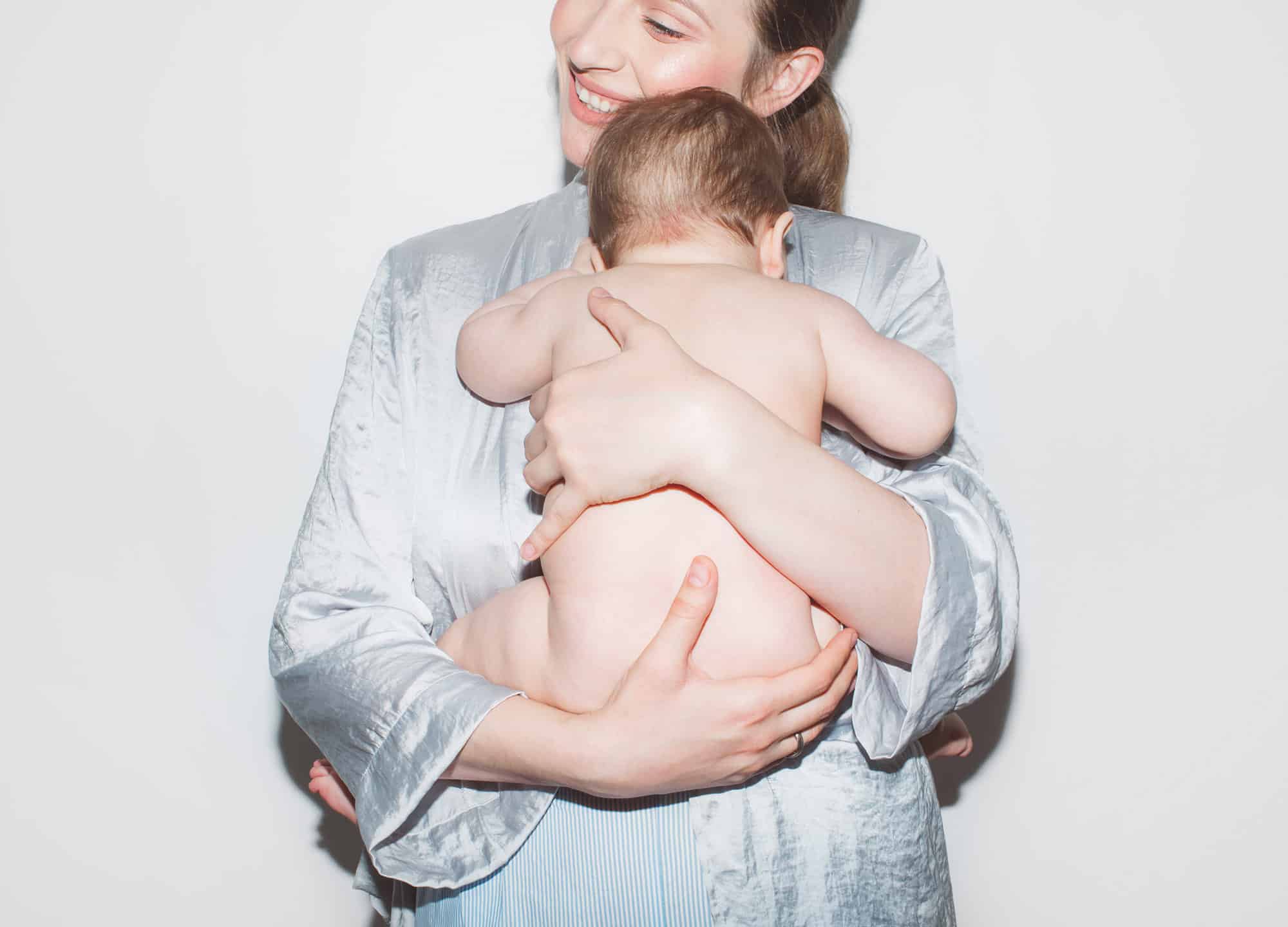Generally speaking, a tummy tuck, or abdominoplasty, is one cosmetic procedure most women consider once they’re done having children. Whether it’s performed solo or as part of a mommy makeover, a tummy tuck is an effective way to repair the separation of abdominal muscles and remove excess skin, both common side effects of pregnancy. But what if you get pregnant after a tummy tuck? Ahead, experts answer five common questions about this scenario.
Can you have a baby after a tummy tuck?
In a word, yes. “Ideally, you’d wait until you were done having children to have a tummy tuck, but it’s not the end of the world if you get pregnant afterward,” says New York City board-certified plastic surgeon Dr. Lisa F. Schneider. The experts we spoke with agreed that while it may not be the most advisable course of action, pregnancy and giving birth after an abdominoplasty are both possible and safe. However, it’s crucial to disclose your tummy tuck (as well as any other surgeries) to your OB-GYN in the early stages of pregnancy.
What are the risks of pregnancy after a tummy tuck?
“It’s not dangerous to have a baby after a tummy tuck,” reiterates Dr. Falguni Patel, a board-certified OB-GYN in Aberdeen, New Jersey. “It won’t cause any issues with the pregnancy, it won’t cause preterm labor, and it won’t affect the position of the uterus.” Long story short, there’s no danger to mom or baby.
That being said, some women do experience more discomfort, particularly in the third trimester. A tummy tuck will leave your stomach fairly flat, so even if you gain a minimal amount of weight, the tension created as that tight skin stretches can be uncomfortable or painful, especially later in pregnancy, explains Dr. Patel.
Ultimately, the biggest drawback to having a baby after tummy tuck is purely cosmetic. “You’re probably going to need another tummy tuck [if you want to maintain your results]. The skin and the repair to any gap in the muscles are all going to get stretched out again,” says Dr. Schneider. Dr. Patel agrees, adding that this is the primary reason it’s recommended to do a tummy tuck once you’re certain there are no more babies on the horizon.
It’s also worth noting that the results of a secondary tummy tuck likely won’t be as good as those of the first. “It’s a complicated operation that you can’t really repeat in the same way. Once the skin and muscles are stretched out again, it’s not possible to re-create it exactly,” says Beverly Hills, California, board-certified plastic surgeon Dr. Kelly Killeen.
Related: Doctors Answer 6 of the Most Common Questions About Tummy Tuck Recovery
How will pregnancy affect a tummy tuck scar?
Getting pregnant too quickly post tummy tuck, when the scar tissue hasn’t fully softened, could cause some strange stretching around the incision, cautions Dr. Killeen. The scar might become indented in the middle or the skin around it become looser in some areas and tighter in others, simply because the scar tissue is too firm and not able to stretch evenly, she says. Ideally, waiting at least six months to a year post-procedure before getting pregnant is best, Dr. Killeen adds. The scar can also become raised or bumpy as well as change color: just as many expectant women develop a vertical brown or black line down their belly, known as the linea nigra, scars can also darken due to hormones, says Dr. Schneider.
Can you have a C-section after a tummy tuck?
You can, though the surgery can be slightly more challenging for your OB-GYN, especially if you’ve had other C-sections. “Because there’s more scar tissue involved, it takes longer to get to the fetus and there may be some disruption to the original tummy tuck scar,” says Dr. Patel. (The more surgeries you’ve had, the more bands of scar tissue [called adhesions] there will be in the area, which is why it can be more difficult if you’ve had previous C-sections. In the event of an urgent, high-risk C-section, extra scar tissue could pose an issue, which is why it’s crucial to inform your OB-GYN of past surgeries.) That being said, C-section and tummy tuck incisions are both done in a similar spot, very low on the abdomen, right above the pubic bone. If the tummy tuck incision is in the exact right spot, it’s possible to go through that for the C-section rather than creating another new incision, says Dr. Patel.
What should you do if you get pregnant after a tummy tuck?
Don’t stress. Whether it was a change of heart, a new relationship, or an unplanned pregnancy that got you here, you and baby will likely be just fine. And there are things you can do that, at the very least, will help maintain some of your tummy tuck results. “Gaining weight slowly and steadily is a good idea, as is focusing on keeping your core muscles strong,” advises Dr. Killeen.
On the flip side, if you’re contemplating a tummy tuck post-baby but aren’t sure whether there are more children in your future, remember that there are other procedures you can try in the interim. According to Dr. Patel, this is a good time to consider minimally invasive skin tightening treatments, such as BodyTite. While the results will be less dramatic, it’s also less of an investment if you do decide to get pregnant again. The bottom line: It’s best to have a tummy tuck after pregnancy and once you know for certain that you’re done having children—but if life happens and things don’t go according to plan, that’s okay too.











